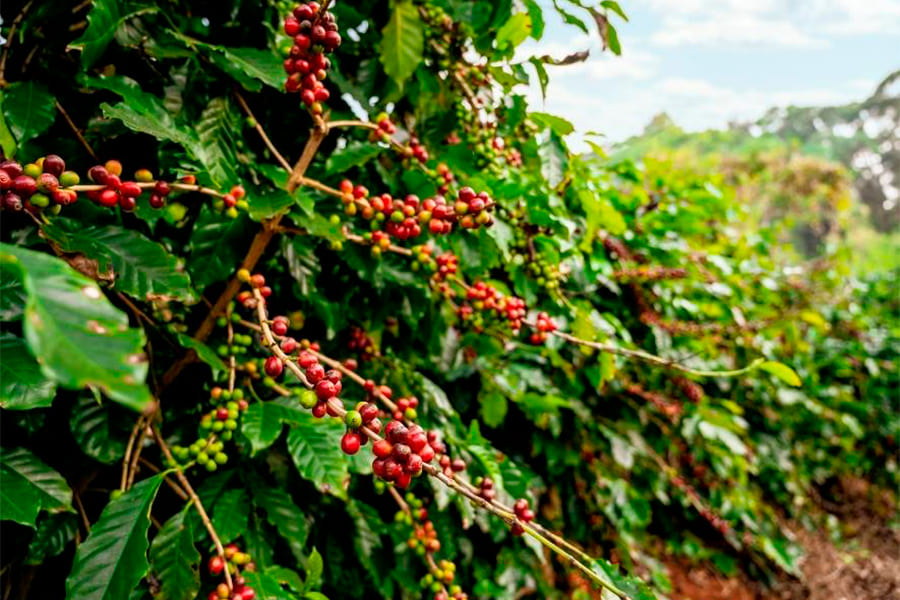Coffee is grown in the tropical zone due to optimal climatic conditions, such as humidity and altitude.
Arabica is more delicate in its cultivation and does not adapt as well to changes, but gives higher quality beans.
The Robusta coffee plant is a more resistant and less demanding plant when it comes to growing conditions. Thus, it is a higher-yielding crop, as it can be cultivated on flat land, which increases the number of plants per area.
Water conditions are also important, ideally the soil where it is grown should have a very marked rainy season that forces the plants to flower.
In addition, the altitude has to be taken into account. While Arabica coffee is usually grown at altitudes between 800 and 2,100 metres, Robusta coffee is sufficient at altitudes between 500 and 1,200 metres.
Coffee trees growing at higher altitudes have a slower ripening process due to lower temperatures and are considered to produce higher quality beans.
Climatic conditions determine the variety of coffee plant that can be grown.
The world's coffee production volume is concentrated in:
- Brazil, with a third of world production
- Vietnam, the great unknown
- Colombia, renowned for its high quality coffees
- Indonesia, the world's most expensive coffee
- Ethiopia, the beginning
- Honduras, a great arabica
- India produces coffee but consumes tea
- Uganda, rainy seasons favour concentrated harvests
- Mexico, young producer
- Peru, at an altitude of over 1,500 metres




